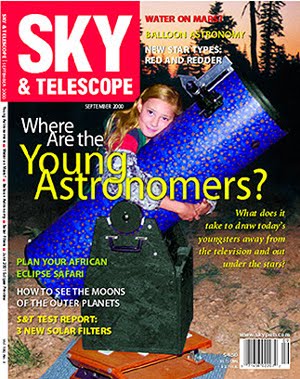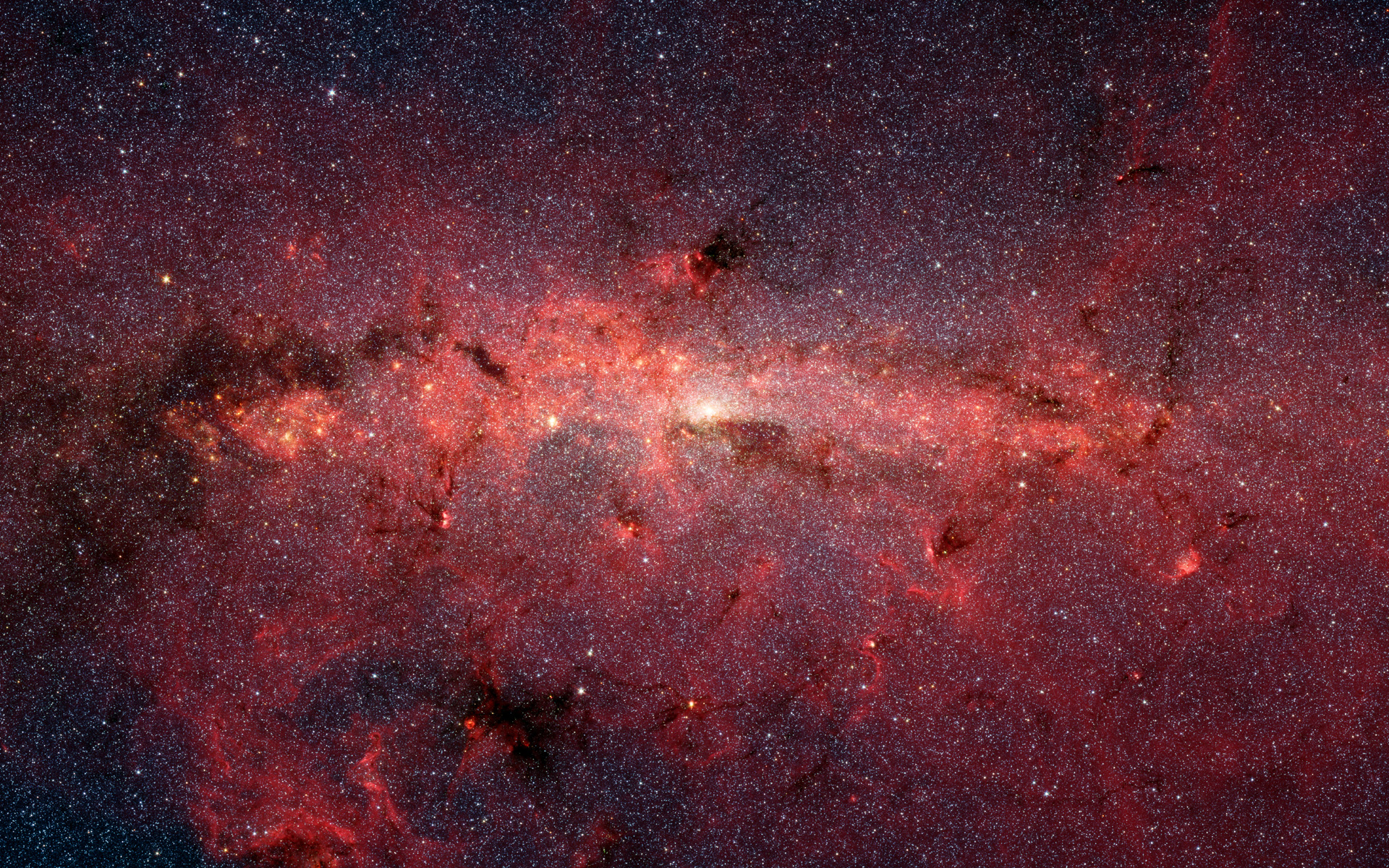There was talk during the week of spring temperatures making a short appearance in the bay area for Friday, and after some mailing list discussion a group of observers decided to try again for clear skies at Henry Coe State Park.
Upon arriving at the observing site, I found I was the only one there. Stepping out of my truck, a stiff westerly wind blew cold in my face. Facing the wind, I looked at the cloud bank over the Santa Cruz mountains, with Mt. Madonna peeking above, and south above the range running east along highway 152 from Fremont Peak to Pacheco Peak, past Elephant's Head, Lover's Leap and finally our other observing site at Whiskey Flat. The clouds to the southeast would slowly encroach on us as the night wore on, but they did not deter us from having, finally, a good night to observe.
As the sun set into the low clouds atop the western range, a haze began laying in over the valley and San Jose to the northeast. The reds and golds of the illuminated clouds combined with twilight to bring an old familiar feeling of relaxation, peace and anticipation. The stars were coming out. Observers were guessing at the bright stars popping out. Capella, Sirius, Procyon and the obvious group in Orion, Jupiter and Saturn heading toward the west. By true astronomical dark, we probably had 25 scopes set up in the parking area. There was an audible buzz about, as the stars were out, for the first time in what felt like months.
Even before true dark, we were looking for faint objects on our observing list. The night would take us through several objects in the Herschel catalog in Cancer and Ursa Major.
In Cancer, we logged a total of ten new objects Of those, five were individual galaxies that were interesting to find, but sat alone in the eyepiece. A complete listing of objects is at the end of this report. The other five in Cancer were interesting.
NGC 2783, UGC 4689 and NGC 2789 comprise Hickson 37a in Cancer. The brightest member, NGC 2783, is a mag 12.6 (sb 13.9) 2.1' x 1.5' elliptical situated conspicuously between two mag 8 stars, and seems involved with several other star or galaxies. In retrospect, looking at this object's photo, I wish I'd gone to high power. I will do so at a darker site, as there are easily two other galaxies involved. About 16' NE is the edge on galaxy UGC 4689, easily visible at mag 13.6 but sb 13.2, a 2.0'x0.7' slash of light running NE to SW. 25' SE of 2783 is the round galaxy NGC 2789, mag 12.2, sb 13.5 at 1.9'x1.9'. In a good dark sky, an additional 8 galaxies would be present.
After Cancer rose to sit in Dobson's hole, we decided to wake the big bear from its winter hibernation. We would confirm 29 objects in the constellation, of which two groups stand out.
NGC 3757 was the main target in a group that comprised 4 galaxies. 3757 is a small, yet bright, round galaxy, shining at mag 12.6 with an sb at 12.7. In size, it is no more than 1.0'x1.0'. The bright star 35' S of the galaxy shines at mag 6.8, with a close pair to its WNW. To 3757's NNE and about 22' away is UGC 6604... an elliptical about 1.0' in size. On the opposite side of NGC 3757 but only about 14' distant is UGC 6575, the mag 13.6 (sb 13.2) spindle pointing almost N/S with an extent of 2.0'x0.4'. Another edge on is NGC 3795, 25' to the E of 3757. 3795 is a mag 13.1 (sb 13.1) nearly identical in size to UGC 6575, just 1" larger in each dimension. Surprisingly I failed to note UGC 6616, a bright but extended galaxy SE of 3757... I suppose at 2.3'x2.1' and mag 13.7 it was just a bit to dim for Coe on this night.
The other group that was an eyeful was ARP 224. There were more than just Arp 224 in this and neighboring fields, I'm certain. I started with NGC 3921, at 2.1'x1.3' it is classified elliptical. It was brighter in the middle, shining at mag 12.4 (sb 13.4). A short 5' W is MCG9-19-213, a small spiral looking more like a planetary at 0.5'x0.3' and appearing brighter than its mag 14.1 due to its compact size. The same distance N of 3921 is NGC 3916, an Sb type galaxy almost mag 14, but an sb at 13.3... the galaxy is noticeably elongated at 1.6'x0.4' in an ENE/WSW orientation. Continuing away from 3916 in the same direction another 13' will place you at NGC 3913, a largish galaxy with a low surface brightness. The galaxy is mag 12.6, but its sb of 14.5 makes is more of a challenge... this is a function of the light being spread over a 2.6'x2.6' area of the type Sd object. 42' E of 3921 sits the eye catching edge on spirals NGC 3972 and 3982. 3972 is a type Sbc galaxy at mag 12.3, sb 13.7, and 3.9'x1.1' in a NW/SE orientation. 3982 appears almost round at 2.3'x2.0', and is type Sb, appearing bright due to its mag 11 and sb 12.5 ratings. This area is just amazing when first observed. Also in the field are NGC 3998 and NGC 3990 a bit east of 3972.
Another group I will not describe in detail, but worth visiting is centered around NGC 4335 and includes; NGC 4364, NGC 4362, NGC 4284 (Markarian 207), NGC 4284 and NGC 4290.
The ebb and flow of the evening had me doing concentrated observing for a few hours, then relaxing by walking around and looking at other equipment, or talking with others about equipment, raising kids, status of other observing sites, and so on. Gradually, the clouds from the east moved in and passed zenith. It was past 3 a.m. and only a few observers remained, all agreeing what a great night it had been. We were lucky to get a break in the weather. It was a fun and well deserved observing session. Next morning we awoke to find all the cities buried under fog. During the later part of the evening, one could tell this was the case as the sky became quite dark, and the cities appeared as small circular glows under the low clouds. By 9 a.m. the fog was blowing east up the hills, and soon engulfed us. We drove down the mountain, back into the cloudy winter we've grown accustomed to.
| Date | March 3, 2000 |
|---|---|
| Telescope | 18" f/4.5 Obsession |
| Finder | Telrad |
| Eyepiece | 20mm Nagler Type II |
| Star atlas | The Sky level 4 V5 by Software Bisque |
| Limiting magnitude | 5.8 at the bowl of the Big Dipper |
| Temps | temperate, much like a spring evening... perhaps down to the high 40's. |
| Catalog number | mag | sb | type | size (") |
|---|---|---|---|---|
| NGC 2628 | 13.3 | 13.4 | Sc | 1.1x1.1 |
| NGC 2661 | 12.8 | 13.4 | Sc | 1.4x1.3 |
| NGC 2764 | 12.9 | 13.1 | E | 1.5x0.9 |
| NGC 2783 | 12.6 | 13.9 | E | 2.1x1.5 |
| UGC 4689 | 13.0 | 13.2 | S0? | 2.0x0.7 |
| NGC 2789 | 12.2 | 13.5 | S0a | 1.9x1.9 |
| NGC 2558 | 13.0 | 13.7 | Sab | 1.7x1.3 |
| CGCG119-51 | 14.1 | |||
| NGC 2582 | 13.0 | 13.3 | Sab | 1.2x1.2 |
| NGC 2679 | 13.3 | 14.4 | SB0 | 1.8x1.8 |
| NGC 3757 | 12.6 | 12.7 | S0 | 1.1x1.1 |
| UGC 6575 | 13.6 | 13.2 | Scd | 2.0x0.4 |
| NGC 3795 | 13.1 | 13.1 | S | 2.1x0.5 |
| UGC 6604 | 13.9 | |||
| NGC 3770 | 12.9 | 12.4 | SBa | 1.0x0.7 |
| NGC 3809 | 12.7 | 12.4 | S0 | 1.0x0.8 |
| NGC 3782 | 12.5 | 13.5 | SBc | 2.3x1.3 |
| NGC 3796 | 12.5 | 12.6 | S | 1.3x0.9 |
| NGC 3809 | 12.7 | 12.4 | S0 | 1.0x0.8 |
| NGC 3835 | 12.4 | 12.7 | Sb | 1.9x0.8 |
| NGC 3921 | 12.4 | 13.4 | Sap | 2.1x1.3 |
| MCG 9-19-213 | 14.1 | S? | 0.5x0.3 | |
| NGC 3916 | 13.9 | 13.3 | Sb | 1.6x0.4 |
| NGC 3913 | 12.6 | 14.5 | Sd | 2.6x2.6 |
| NGC 3972 | 12.3 | 13.7 | Sbc | 3.9x1.1 |
| NGC 3982 | 11.0 | 12.5 | Sb | 2.3x2.0 |
| NGC 3977 | 13.4 | 14.3 | Sab | 1.7x1.5 |
| NGC 3998 | 10.7 | 12.5 | E2p | 2.7x2.2 |
| NGC 3990 | 12.6 | 12.6 | S0 | 1.4x0.8 |
| NGC 3985 | 12.6 | 12.6 | Sm | 1.3x0.8 |
| NGC 4161 | 12.9 | 12.5 | S | 1.1x0.7 |
| NGC 4149 | 13.7 | 13.7 | SBc | 1.3x0.9 |
| NGC 4271 | 12.6 | 13.1 | E-S0 | 1.5x1.3 |
| NGC 4335 | 12.4 | 13.5 | E2 | 1.9x1.5 |
| NGC 4362 | 12.6 | 14.3 | S | 0.7x0.36 |
| NGC 4634 | (see below) | |||
| NGC 4284 | 13.5 | 14.5 | Sbc | 2.5x1.2 |
| NGC 4290 | 11.8 | 13.1 | SBb | 2.3x1.6 |
(NGC 4364 - we observed something as displayed on The Sky, but upon reviewing other data, this object is listed as a duplicate for NGC 4362. This will need revisiting).












No comments:
Post a Comment